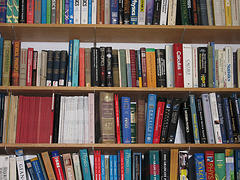Why Do Pressure Cookers Cook Faster? Physics Lesson in the Kitchen

Have you ever wondered how pressure cookers work? What is the secret that makes food turn out so delicious in so little time when pressure cooked? Actually, there is no secret or mystery whatsoever – it’s just plain physics! You might be surprised to find out the simple principles that make a pressure cooker work. Cooking becomes a piece of pie with the help of this great invention.
A pressure cooker is nothing more than a sealed vessel that prevents air, steam, or liquid from escaping the pot. Because the steam resulting from boiling the inside liquids has nowhere to go, pressure is created. Probably everybody knows that water’s boiling point is 212°F or 100°C. Try as you might, water will not get any hotter than this. So what is the trick?
The pressure created inside is what allows water to rise at higher temperatures. With higher pressures, water’s boiling point also increases to as much as 250°F. And this extremely high temperature reduces cooking time. It is as simple as that.
High pressure creates high temperature and the higher the temperature, the faster your food will be ready. Compared to a normal cooking pot, pressure cookers can cook food twice or even three times faster. You can prepare a steak in about 15 minutes, and it will definitely turn out just as tasty as a traditionally cooked one. No wonder so many chefs choose pressure cooking dishes. It saves time and energy.
Once you got the physics behind the cooking process, the next step is learning how to use a pressure cooker properly. In case you never used one before and you are a little intimidated by the extreme pressures that build inside the pot, you should know there is nothing to worry about. Pressure cookers are easy to use and are remarkably safe.
To cook succulent, tasty meals with your pressure cooker, you just have to follow a few instructions:
1. Get yourself a pressure cooker
If you do not already possess one, go and buy yourself a brand new pressure cooker. You can find a vast range of models on the market that offer increased safety and different cooking features. In case you have one, take some time checking its condition before cooking. Any deterioration could affect the cooking process. If the cooker is in excellent shape, start preparing your meal.
2. Add the ingredients and the necessary amount of liquids
The next step is putting the foods inside the vessel, making sure you respect the fill line of the pot. Do not overfill the cooker. Add water or other liquids in the exact amount specified by the recipe. Close the lid, select pressure level and place the cooker onto a heat source.
3. Cooking time
Wait for the pressure to build inside the pot. Most of the pressure cookers have indicators that show when pressure rises in the vessel. Once it reaches the desired level, you have to lower the heat to maintain the pressure, and then start timing. For every food, you should find in the recipe the exact cooking time. Make sure you respect it. Overcooking could turn your dish into something like a soup.
4. Decrease pressure
If cooking time is up, turn off the heat and lower the pressure either naturally, by letting the pot cool down or by running cold water over it. Quick release is another option, in the case of the pressure cookers that have this feature. When the indicator on the vessel shows that pressure has dropped, you can safely open the lid.
5. Enjoy your meal
Cooking delicious meals is easier than ever with the help of such a tool. If you want to save time as well as impress your guests with your tasty dishes, getting yourself one of the many pressure cookers available is, indeed, a great idea.
Learn more about pressure cooking and different pressure cooker models available on the market by reading the pressure cooker reviews in our site.
More Physics Articles
